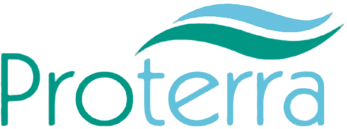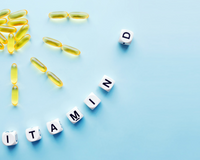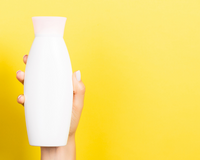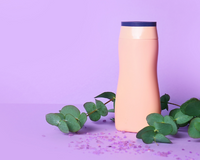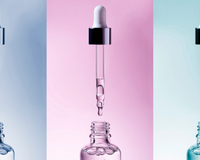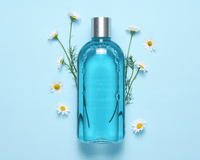Cystic Acne Treatment
People with cystic acne have long-lasting, painful nodules on their faces and other parts of their bodies. This type of acne is also called acne rosacea. Adolescent acne goes through different stages, each of which needs a different treatment. Open comedones (whiteheads) could come next (blackheads). Pustules are more likely to scar if they are "popped," which makes them more likely to do so. Cystic acne is the last stage of acne, and if left untreated, and if it doesn't get the proper cystic acne treatment, it can cause a lot of scarring. Scarring is expected because these are collections of inflammatory material that take up space.
Cystic acne can happen on the face, chest, back, or a unique combination of these places, and it can be very bad. People with cystic acne may also be part of a group that has some combination of acne on the face with draining lesions and boils on the scalp, axilla, groin, or chest. Conglobate acne is a type of acne that can be very bad. It can be very bad on the face and the back, and it can also cause arthritis and other musculoskeletal problems.
Young women are most likely to get perioral dermatitis, which is similar to acne. It causes small bumps on the chin, around the mouth, and along the jawline. This usually doesn't cause the big, scarring nodules and cysts that come with acne. Some of these papules may be deep-seated, but this usually doesn't cause them.
What Causes Cystic Acne And Treatment Options?
There is a trend that if a parent or older sibling had a lot of scarring acne, you are more likely to get it. A family history of cystic acne is not always true, even in the worst cases. Cystic acne may start or get worse if testosterone levels rise, either inside the body or through the use of anabolic steroids. Most combination contraceptive pills will help with acne, but progesterone-dominated contraceptives like progesterone-only mini-pills, progesterone implants, and progesterone-eluting intrauterine devices may make acne worse. These may still be good contraception when isotretinoin use for acne is taken into account.
How To Diagnose That You Need Cystic Acne Treatment?
Cystic acne is caused by long-lasting, painful nodules on the face, back of the neck, chest, and back. It is also known as acne rosacea. The nose could be completely free of pustules and nodules, or it could be a big part of them. When these nodules finally fall off, they often leave scars. Individual scars may look like "ice pick" scars from acne, but when many of them are together, they look more like "worm eaten" scars. This is most likely to happen on the cheeks. As pus-filled pimples, these turn into inflammatory red papules (bumps) that become red and swollen. When these are treated or in remission, they may become pink spots.
Cystic acne is usually diagnosed by how it looks in the doctor's office. There may still be pink scars even if there aren't any active inflammatory nodules in your body. People who have a skin biopsy don't need one unless it is thought that the person has an infection that is caused by yeast or an infection that is called eosinophilic folliculitis. Most of the time, bacterial culture isn't very useful because patients may be able to take antibiotics that they are resistant to and not take antibiotics that they are able to take.
Cystic Acne Treatment At Home
Baking soda, different masks, apple cider vinegar, and tea tree oil are some of the home remedies that have been suggested for cystic acne. People who have used these remedies can often find testimonials for them online. Especially on web sites that sell these supplements or alternative therapies. When they are put to the test of science, they are usually found to be ineffective and may only be a waste of time and money.
A lot of people have used vitamin A to get rid of acne, but it hasn't always worked. If you're taking isotretinoin, extra vitamin A should not be taken because of the risk of vitamin A toxicity. Biotin, a vitamin cofactor, is important for healthy hair, skin, and nails, but it won't help with severe cystic acne if vitamins are the only treatment.
Cystic acne may be caused by a bad diet, just like other types of acne. There's more to acne than "greasy food and chocolate," which many people blame for it. When milk, especially skim milk, is not taken in moderation, it can make acne worse. It's also linked to foods that quickly raise blood sugar. A lot of other milk products, like whey protein supplements, can make acne worse. Many people who think "sweating at the gym" is making their acne worse after they work out should instead blame the protein shakes they drink after they work out. People don't know for sure how soy or almond milk might help with acne right now.
Do Medicines Treat Cystic Acne Permanently?
Smoking may make acne worse for everyone, even if the exact reason isn't clear. It's one of the three main risk factors for hidradenitis suppurativa. Most studies have looked at cigarette smoking. But the effects of cigars, smokeless tobacco, haven't been as well-defined as the effects of cigarette smoking.
Combination oral contraceptives can sometimes have quick results on their own. Most people with cystic acne will need oral antibiotics as part of combination therapy. In some people, drospirenone as the progesterone component in oral contraceptives can be very useful. They should not be combined with spironolactone, which is below, because it can cause high potassium levels (hyperkalemia). There have been reports in the past of less effective contraception if the patient is also taking tetracycline. However, this is a common combination for cystic acne. A review of the literature shows that this may happen from time to time, but it is very rare. People who have irregular periods when they start taking tetracycline should take extra steps to avoid getting pregnant.
